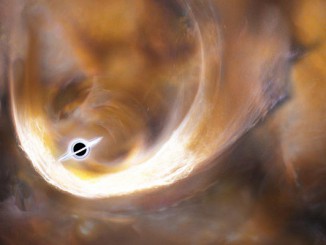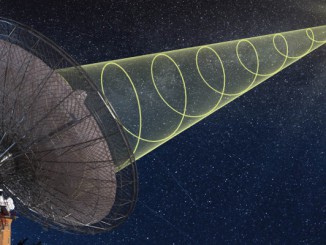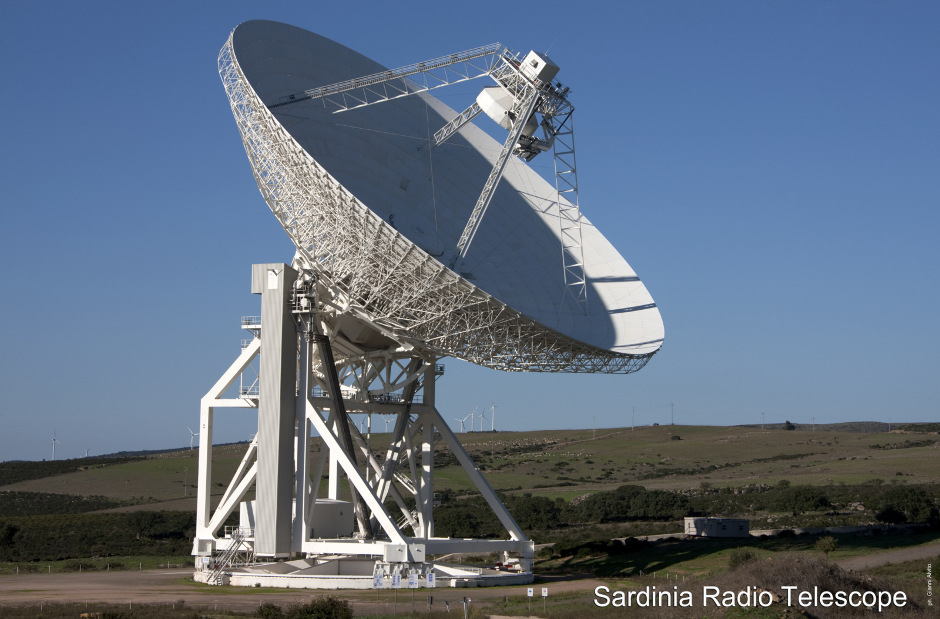
It all starts on 18 April 2015, when the typical signal of a FRB is detected by the Commonwealth Scientific and Industrial Research Organisation (CSIRO)’s 64-metre Parkes Radio Telescope in Australia. “In a matter of hours, it has been issued an international alert and various telescopes around the world were involved in the search for the ‘result’ of that signal,” says Evan Keane, Project Scientist at the Square Kilometre Array Organisation, first author of the paper describing the discovery, published in the latest issue of the journal Nature.
The INAF’s Sardinia Radio Telescope (SRT) was among them. “In April 2015, SRT was not in operation at 100 percent as it is today. Thanks to the great work of the INAF team for scientific validation of the radio telescope, SRT has, however, been able to attend promptly to the international campaign,” explains Marta Burgay. “The SRT observations, combined with those of other radio telescopes single disc, have ruled out that the FRB is associated with a repetitive cosmic phenomenon.”
Thanks to the Australian Telescope Compact Array’s six 22-metre dishes and their combined resolution, the team was able to pinpoint the location of the signal with much greater accuracy than has been possible in the past and detected a radio afterglow that lasted for around 6 days before fading away. This afterglow enabled them to pinpoint the location of the FRB about 1000 times more precisely than for previous events.
The team then used the National Astronomical Observatory of Japan (NAOJ)’s 8.2-metre Subaru optical telescope in Hawaii to look at where the signal came from, and identified an elliptical galaxy some 6 billion light-years away. “Eight years after the identification of the first radio burst, it has finally been possible to establish the ‘place of birth’ of one of these events. Thanks to this, the identikit of the probable ‘parents’ may be limited to catastrophic events, highly energetic and not repetitive,” explains Andrea Possenti.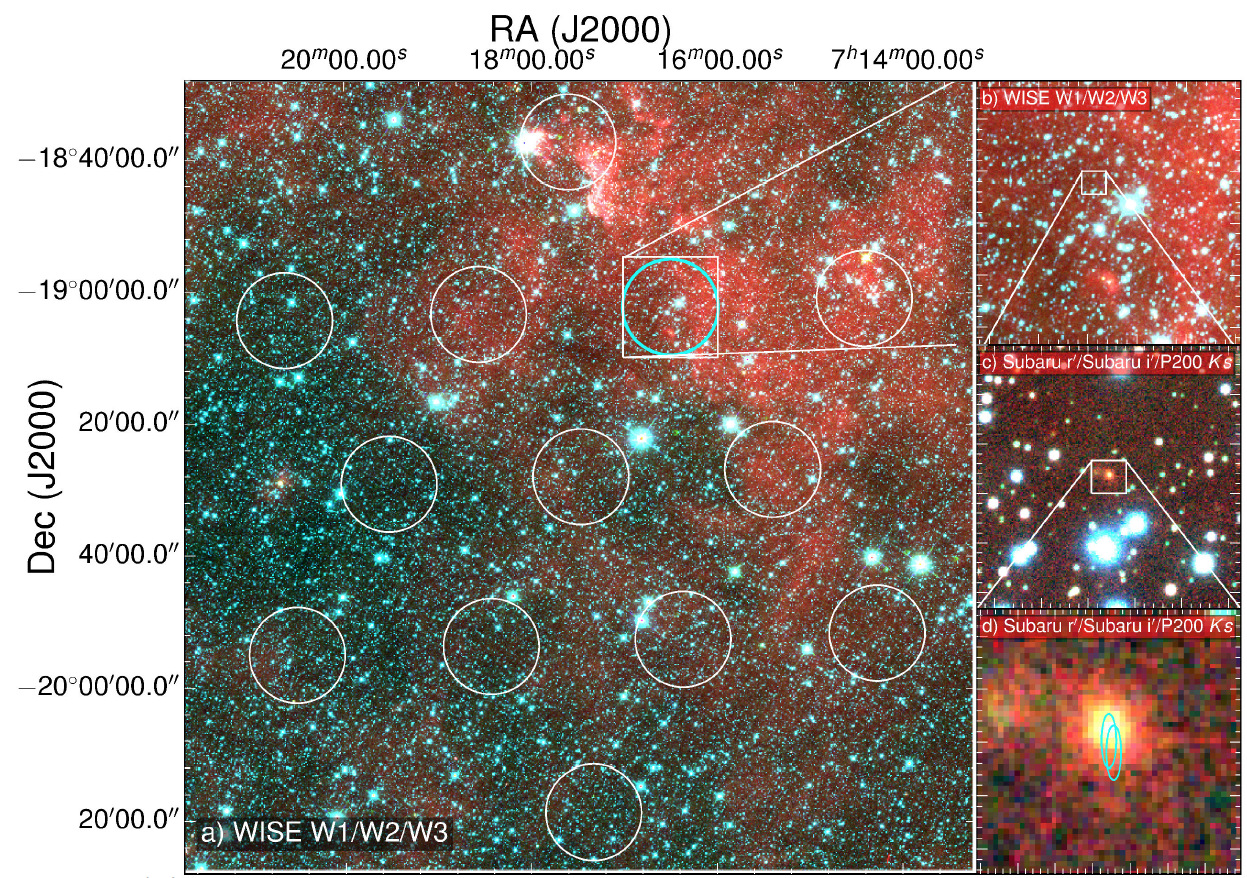
In the current model, the universe is believed to be made of 70 percent dark energy, 25 percent dark matter and 5 percent ‘ordinary’ matter, the matter that makes everything we see. However, through observations of stars, galaxies and hydrogen, astronomers have only been able to account for about half of the ordinary matter, the rest could not be seen directly and so has been referred to as ‘missing’.
“The good news is that our observations are consistent with the theoretical model: we found the missing matter,” says Evan Keane. “It’s the first time that a flash radio is used to conduct a cosmological measure.”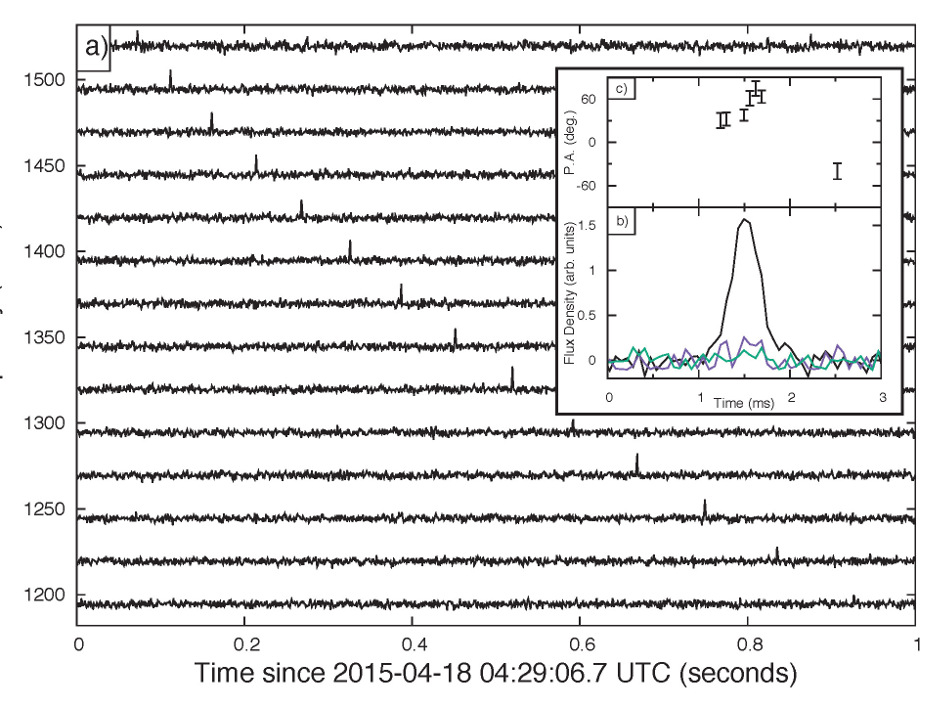
Looking forward, the Square Kilometre Array, with its extreme sensitivity, resolution and wide field of view is expected to be able to detect hundreds of FRBs and to pinpoint their host galaxies. A much larger sample will enable precision measurements of cosmological parameters such as the distribution of matter in the universe, and provide a refined understanding of dark energy.


